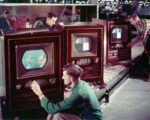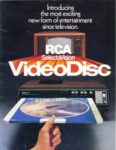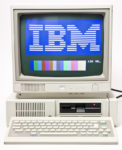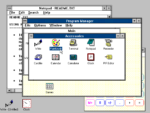The first elevator to move people is installed, the first color televisions go on sale in the US, and a popular operating system gets an upgrade… It all happened This Week in Tech History.
This week in 1857 – Elisha Otis installed an elevator at 488 Broadway in New York City. Elevators had been in operation before this, including those made by Otis, but they primarily moved freight. This was the first elevator used to move people.
1954 – The first color television sets using the NTSC standard are offered for sale to the general public. The RCA CT-100 set offered a 15-inch screen and sold for a cool $1,000 dollars. In today’s money, you’d be looking at over $7500. While other sets had beaten RCA to market, slightly. It was RCA’s backwards compatibility with black and white broadcasts that came to define the market. After initial sales to early adopters, the rest sold poorly, even after a price cut. Many were donated by RCA for training purposes to trade schools and technical colleges
1981 – RCA put its Selectavision laser disc players on the market. Soon, the product was called “the Edsel of the entertainment field,” referring to the Ford Edsel automobile that was considered the car company’s biggest flop. Consumers weren’t too keen on the units $500 price tag or the videodisks that cost about $15 each.
1985 – IBM announced that it was planning to stop making the PCjr consumer-oriented computer. The machine had been expected to dominate the home computer market but didn’t quite live up to those expectations. In the 16 months that the PCjr was on the market, only 240,000 units were sold.
And this week in 1990 – Microsoft Windows 3.0 was released. This third iteration of the operating system featured a new graphical user interface where applications were no longer represented as a list of file names, but rather as icons that a user would click on. Later updates would expand the capabilities to include multimedia support for sound recording and playback, as well as support for CD-ROMs.






